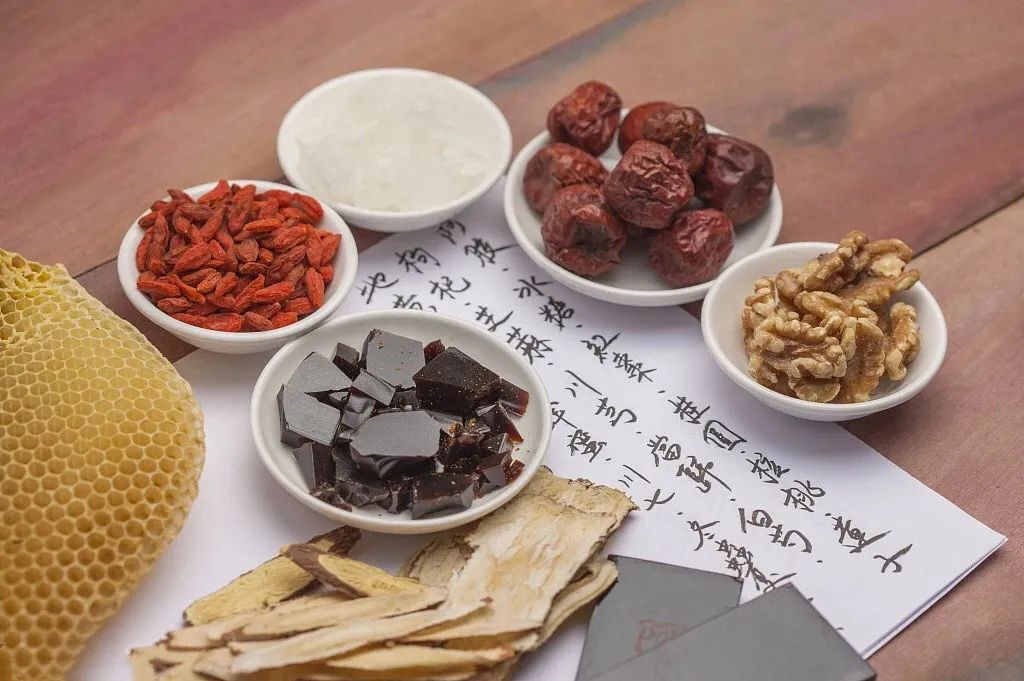The Huangdi Neijing states: “When Qi flows, blood flows; when Qi stagnates, blood stasis occurs.” This means that when the Qi mechanism in the body operates smoothly, the circulation of blood can also proceed without obstruction. Conversely, if the Qi is blocked, the blood flow will correspondingly stagnate, leading to Qi and blood accumulation in various parts of the body, preventing it from circulating throughout. “When there is flow, there is no pain; when there is pain, there is no flow.” Due to the blockage of Qi and blood, various pain symptoms will naturally arise. This is especially pronounced at night when Yin is abundant and Yang is hidden, making the pain more evident.
 Qi Stagnation and Blood Stasis
Qi Stagnation and Blood Stasis
////////
Qi stagnation is a pathological condition characterized by the obstruction of Qi in the organs and meridians. It can be caused by dietary irregularities, emotional distress, or a weak constitution leading to Qi deficiency. Different symptoms will manifest depending on where the Qi is obstructed. Qi stagnation in the spleen may lead to reduced appetite and abdominal distension and pain; Qi stagnation in the liver may cause rebellious liver Qi, red eyes, rib pain, and irritability; Qi stagnation in the lungs may result in unclear lung Qi, chest tightness, and excessive phlegm with cough. Qi stagnation in the meridians can cause pain or limited movement in the corresponding areas. Excessive Qi stagnation can lead to blood stasis, and similarly, “blood is the mother of Qi,” so blood stasis can also exacerbate Qi stagnation.

Causes of Formation
////////
The formation of a Qi stagnation and blood stasis constitution is a lengthy process influenced by various factors such as emotions, diet, age, environment, and disease.
(1) Emotional factors such as anxiety, depression, tension, introversion, or excessive worry can lead to liver Qi stagnation, which over time results in blood stasis.
(2) A constitution characterized by Qi deficiency or Yang deficiency can reduce the functions of transformation and propulsion, leading to sluggish or stagnant Qi and blood flow.

(3) A cold living environment or a constitution that is predominantly cold can lead to the stagnation of Qi and blood flow.
(4) In addition to Qi and blood obstruction, blood stasis can also refer to “extraneous blood,” which is blood that is outside the meridians and cannot circulate normally. This can be understood as local lesions or pathological products accumulating in a specific area, affecting the flow of Qi and blood.

Qi stagnation and blood stasis are the underlying causes of many diseases and are one of the reasons for the chronic persistence of illnesses, hence the saying, “Chronic illness must have stasis.” Individuals with a Qi stagnation and blood stasis constitution are also prone to certain diseases, most of which exhibit significant characteristics of Qi and blood obstruction or prolonged recovery. Examples include stubborn headaches, migraines, cerebral infarction, myocardial infarction, cholecystitis, gastrointestinal dysfunction, mammary gland hyperplasia, dysmenorrhea, uterine fibroids, nodules in various glands, and even tumors.
Treatment Methods
////////
Traditional Chinese Medicine (TCM) believes that all diseases are related to Qi and blood; thus, Qi stagnation and blood stasis can lead to a multitude of diseases. Therefore, it is extremely important to consciously regulate Qi and blood in daily life.
1. Moderate exercise. Lack of exercise is a common factor leading to Qi stagnation and blood stasis. Individuals with Qi stagnation and blood stasis often have poor physical fitness, so when exercising, it is important to choose appropriate forms and times of exercise based on one’s own condition, without exceeding personal limits.

2. Mental health care. In TCM, emotional factors such as anxiety, depression, excessive worry, and high stress are closely related to the liver. Liver Qi stagnation is the root cause. Therefore, mental health care is an important factor to consider. One should cultivate an optimistic attitude and adjust emotions in a timely manner to smooth liver Qi.
3. Dietary care. In addition to maintaining a light diet, one can also use food that has medicinal properties for self-regulation. Foods that invigorate blood circulation and dispel stasis, as well as tonify Qi and nourish blood, such as jujube (Da Zao), donkey-hide gelatin (Ejiao), peach kernel (Tao Ren), walnut (He Tao), and rose (Mei Gui Hua), can be beneficial.

4. Herbal regulation. Patients with pronounced symptoms of Qi stagnation and blood stasis should promptly use herbal medicine to regulate their constitution and improve symptoms. Commonly used herbs in clinical practice that promote Qi circulation and blood activation include safflower (Hong Hua), peach kernel (Tao Ren), salvia (Dan Shen), angelica (Dang Gui), Acanthopanax (Wu Jia Pi), rehmannia (Di Huang), and ligusticum (Chuan Xiong). These can be combined with herbs that tonify Qi and blood as needed. Of course, TCM emphasizes the principles of monarch, minister, assistant, and envoy in herbal combinations, so herbal prescriptions should be taken under the guidance of a qualified practitioner.

5. Traditional TCM treatment methods. External TCM treatments include acupuncture, gua sha, cupping, tui na (Chinese therapeutic massage), and moxibustion, all of which can promote Qi circulation and blood activation, achieving the effect of internal regulation and external treatment through the adjustment of Qi and blood.
Finally, I would like to introduce a tea recipe for patients with mild Qi stagnation and blood stasis. Using 5g of ginseng (Ren Shen), 5g of salvia (Dan Shen), and 10g of rose (Mei Gui Hua) as a tea can help tonify Qi, invigorate blood, and soothe the liver to relieve depression. However, patients should not blindly follow recipes and should consult a qualified TCM practitioner for proper diagnosis and application.
▼ Click to enter the “Anxing Doctor” mini-program, where you can quickly search for doctors or diseases on the homepage and communicate with doctors online, exchange images and texts, and receive tailored prescriptions ▼


